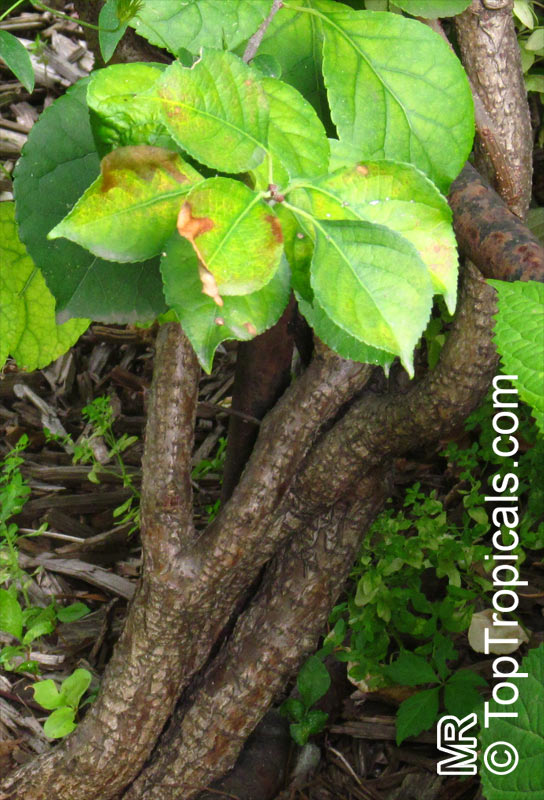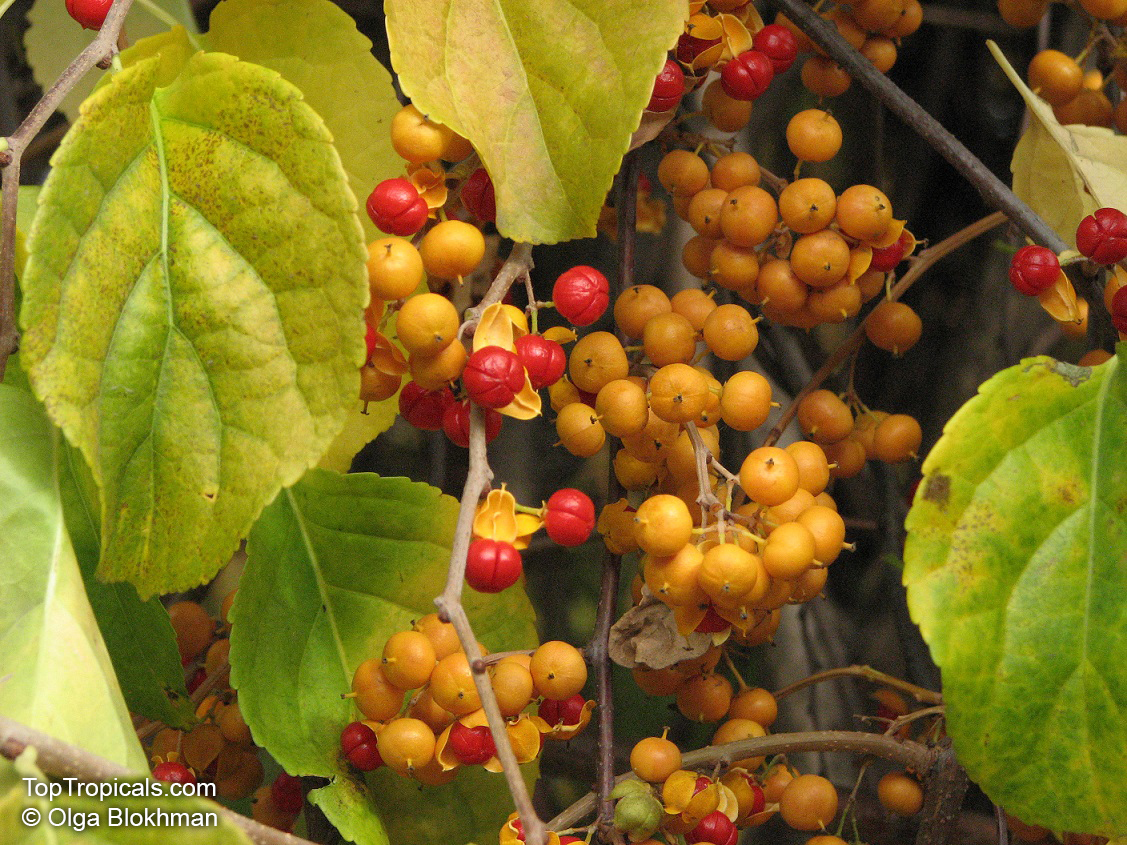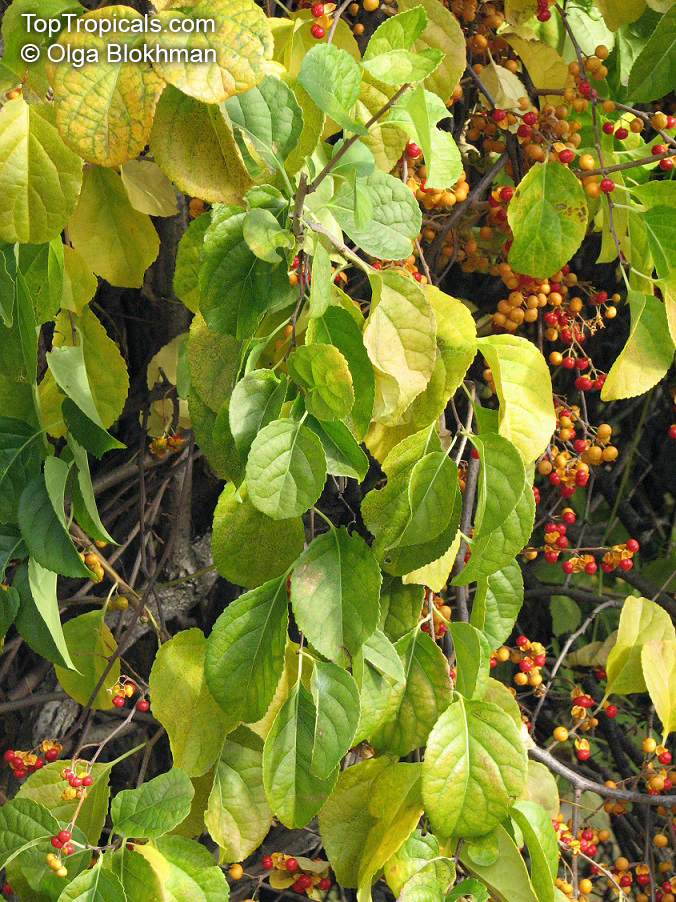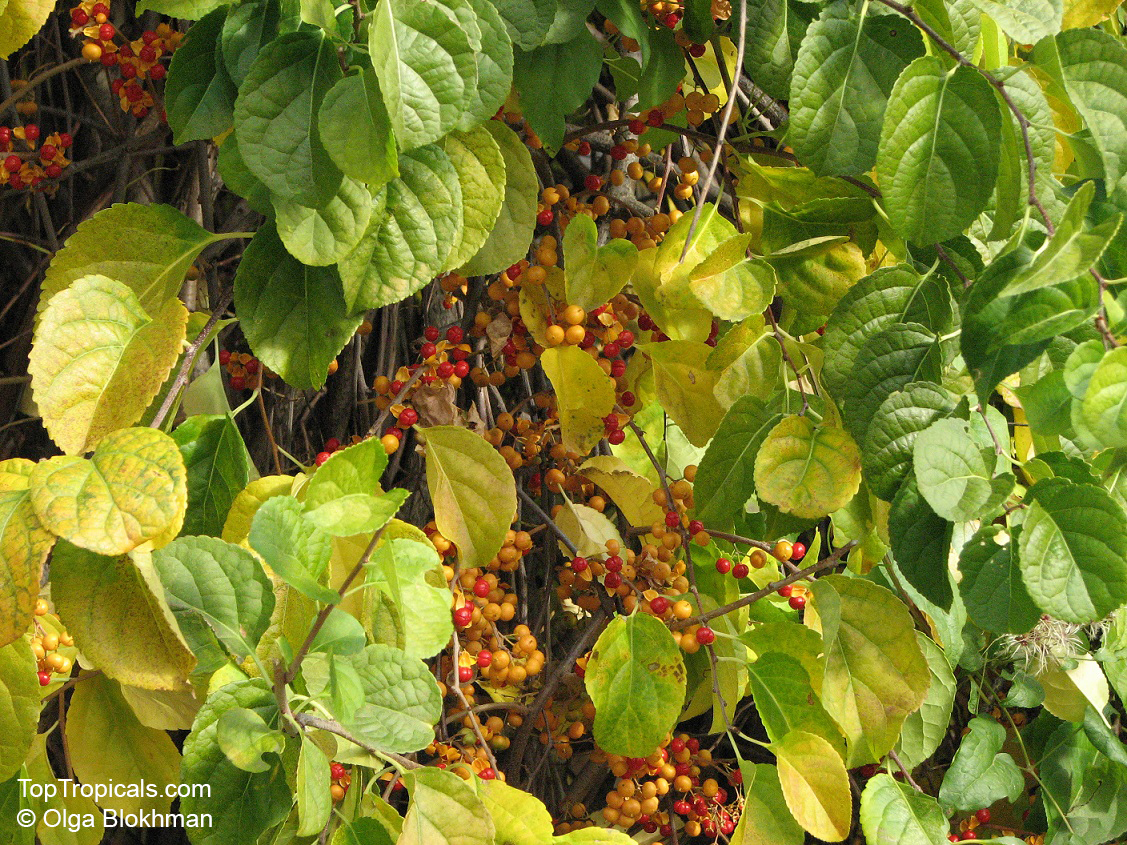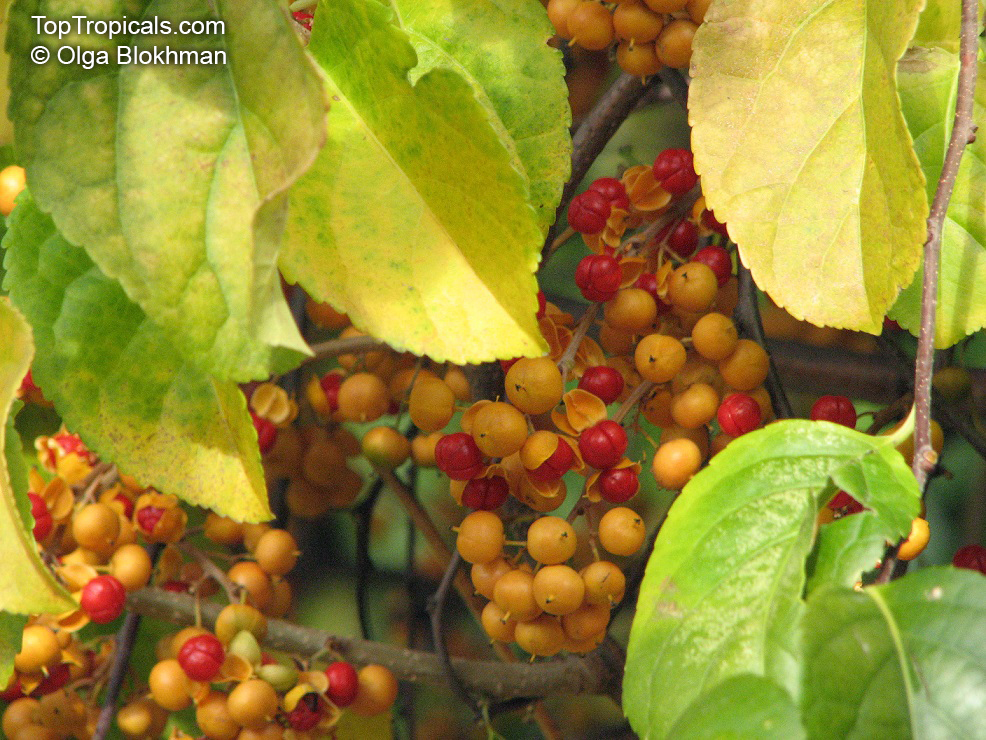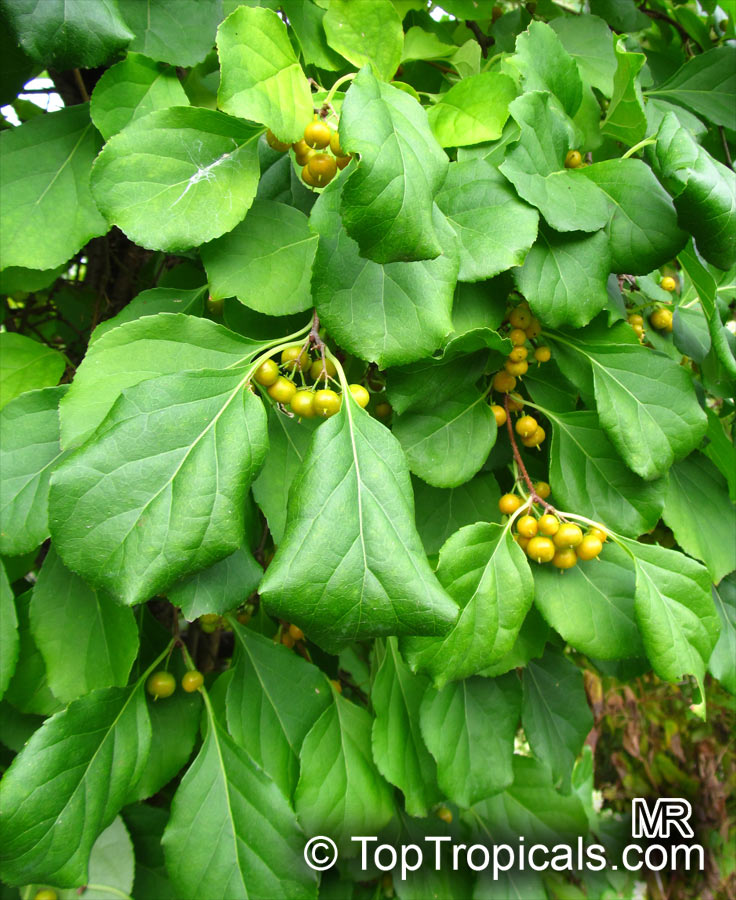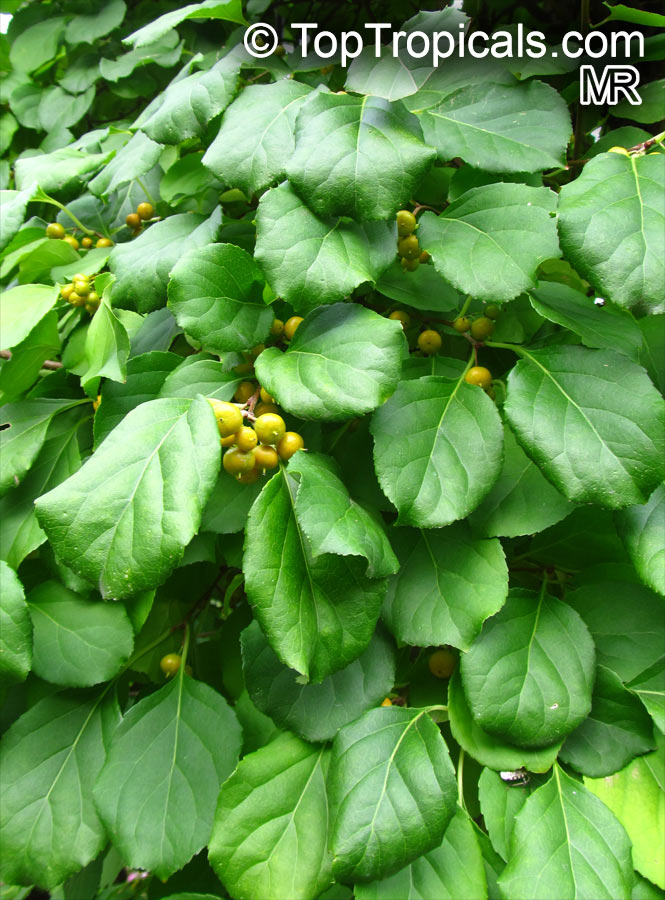Celastrus orbiculatus (Oriental Bittersweet)
Top Tropicals Plant Encyclopedia
Botanical name: Celastrus orbiculatus
Common names: Oriental Bittersweet, Climbing Spindleberry
Family: Celastraceae
Origin: China










This splendid deciduous shrub grows 6-8m in height; its climbing vines attach well to stone, brick and wooden structures. The attractive foliage of Celastrus orbiculatus is ovate, glossy and serrated; they start out green, changing to yellow in autumn. Clusters of small greenish-white flowers appear in summer and are followed by the above-mentioned yellow fruits containing seeds. These seeds are toxic and should be removed before the plant is grown in an area frequented by children or pets.
When it comes to growing Celastrus orbiculatus, the vine prefers a moist, well-draining, fertile soil, and does best with part shade or full sun. Once established, the vine is very drought tolerant but needs regular water for good growth. It should not, however, be allowed to become waterlogged. Prune the plant heavily to keep it in control. It is invasiveness makes this bittersweet unsuitable for smaller gardens.
For cooler climates or regions where winter temperatures are prone to drop to 30s F (-1.1C) the plant can be cultivated in containers, which can easily be moved indoors for winter protection. Place the pot in an area that receives bright, filtered light and continue watering on a regular basis. If signs of wilting, browning foliage, poor growth and pest infestation occur, consider applying fertilizer once a month.
Celastrus orbiculatus is an attractive, fast-growing climber that produces sun-catching blooms and eye-catching fruit capsules. This vine is a good choice to add height to a garden, and is greatly enjoyed by butterflies and hummingbirds. However, due to its invasiveness, this species should be planted with caution.
